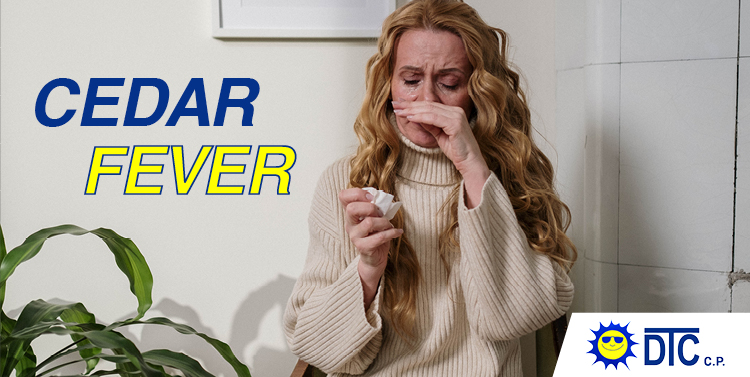
Itchy eyes, runny nose, and constant sneezing are sure signs of Cedar Fever. Cedar Fever isn’t a flu or a virus. It’s our reaction to the pollen released by mountain cedars, triggering allergy symptoms in the winter months every year. Here in Central Texas, there are thousands upon thousands of Ashe junipers (another name for the pollen-spreading culprit). And with so many trees, the pollen is densely concentrated in our area… making daily tasks insufferable for those susceptible to allergies. This year, take action to ease the suffering and keep your home a place where you can breathe easy.
How Does my HVAC Have Anything to Do With Allergies?
Cedar trees begin producing pollen in mid-December, and when we experience our famous Texas winds in the beginning of the year, that’s when we all really start feeling the effects. Certainly, your cedar allergies are worse outside. After all, pollen spreads in the air.
But when it comes to your house, there’s not an air-tight bubble preventing pollen from getting inside. Opening a door to enter and exit is all that’s needed to allow outdoor allergens inside. Pollen can also creep in through open windows and even tiny cracks and openings in your home’s structure. And once that pesky cedar pollen is inside, it recirculates through your home with the help of your HVAC system.
HVAC Improvements to Beat Indoor Allergies
Most homeowners in Georgetown come to a similar, logical conclusion: just turn off the heating and cooling system. This helps, but only temporarily. Pollen and other airborne allergens can collect in the corners of your home, including HVAC ductwork. So when you decide to turn your HVAC back on, there’s a good chance you’ll experience the same sneezy problems.
Here are some steps you can take to prevent indoor allergies like Cedar Fever from getting the best of you:
- Change your Filter More Frequently Than You’d Think – We generally recommend changing air filters every quarter, but if you experience severe allergic reactions to pollen, we recommend replacing them monthly. Choose the highest MERV rating your HVAC system can tolerate without reducing your comfort system’s performance. If you’re not sure, reach out to us for a recommendation.
- Invest in a Whole-Home Air Purifier – A plug-in air purifier is helpful for a small room, but what about the rest of your house? An air purifier installed inside your ductwork cleans every molecule of air as it recirculates through your HVAC system. We recommend the MicroPure Air Purifier by Dustfree. This product is both very affordable and very effective. We can mount the air purifier inside your existing ductwork. Call us for more information: 512-887-5091.
- Schedule a Seasonal Tuneup – Annual HVAC maintenance is important for every homeowner in Georgetown. Make sure your system is working at top-notch performance so that it’s helping you fight your indoor allergies (and not part of the problem). We can help identify issues that may be contributing to your itchy eyes, and recommend repairs before they become bigger issues.
Call DTC For Indoor Air Quality Improvements
Our team at DTC is local to the Georgetown area, so trust us – we are VERY familiar with Cedar Fever. We love helping our neighbors feel more comfortable inside their home and put an end to the frustrating allergy symptoms. Call us today for recommendations on how to improve your home’s indoor air quality: 512-887-5091.
